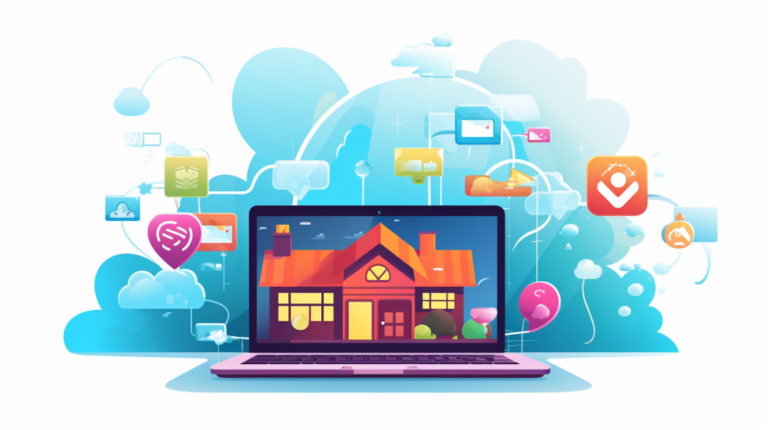Employee Rights In A Work From Home Setup

Feeling a bit perplexed about your rights in this newfound world of remote work? Don’t worry, you’re not alone. The shift to working from home had me scratching my head too, prompting me to dive deep into the nuances of what our privileges are within this setup.
My research unraveled important aspects and legalities tied to a work-from-home policy – everything from tracking rules and reimbursement guidelines to the state laws governing it all.
Ready for some light-bulb moments? Let’s dive in!
Key Takeaways
- Working from home allows for more control over work space and promotes a healthier lifestyle.
- Employees have rights regarding privacy and tracking in a work-from-home setup, and employers must follow the laws governing remote work.
- Remote work fosters inclusivity by breaking down geographical barriers and allowing diverse talent to contribute their unique skills.
- Clear communication is essential to avoid miscommunications and maintain productivity while working remotely.
Understanding Work From Home Setup
Work from home means you do all your work tasks at home. You use a computer, phone or other tools to do your job. It is like being in an office, but your “office” is your own house.
This has become common because of the COVID-19 pandemic.
Working from home can be good and bad. The good part: no wasting time on travel, more control over work space and better health. The bad part: hard to stop working when it’s time, risk of doing too much work (burnout), feeling alone and not saying things right to co-workers.
You need rules for working from home well; these are in a ‘work-from-home’ policy. Some things this policy talks about are who can work from home, how they should talk with others and how their pay works.
Sometimes bosses track what workers do at home. They might look at emails or see what websites someone visits on their computer. Workers have rights here so it’s important for the boss to know the laws about checking up on staff that work from home.
Workers also may get money back for things they buy so they can work properly at their homes – this is called reimbursement.
The setup changes some tax matters too based on where someone actually does his or her job duties – not just where the company says its main location is per se!
The Pros of Working from Home

Working from home offers several advantages. It saves time, allows for customized work environments, promotes a healthier lifestyle, encourages inclusivity, and fosters creativity.
Time Saving
Working from home saves you a lot of time. Think about it, no more wasting hours in traffic. You just need to move from your bed to your work desk at home. This remote work setup helps you use the extra time for other important tasks.
You can spend more quality time with family or take up a new hobby. I also use this saved time on refreshing morning walks before starting my daily tasks. The joy of not being stuck in a car or bus is amazing.
Customized Work Environments
Working from home lets you make your workspace just right. You can pick the best chair and desk for you. A quiet room can help you focus better. Some people like to decorate their space to inspire them.
You can control your own comfort level, too. It is easier to stay cool or warm at a home office than in a big work building! Working from home gives you power over your environment that helps make work fun and easy.
Promotes Healthier Lifestyle
Working from home lets us lead a healthier life. We save time by not needing to travel for work. This gives us more time to exercise or cook healthy meals at home. With no office stress, we can focus on what’s important – our health and well-being! Plus, if we feel sick but still strong enough to work, there’s zero risk of spreading germs around.
What a bonus! Working from home really does help us live better and longer.
Encourages Inclusivity
Working from home has brought about increased inclusivity in the workplace. With remote work, geographical limitations no longer restrict companies when it comes to hiring and collaborating with diverse talent.
This allows for a more inclusive workforce where individuals from different backgrounds and locations can contribute their unique perspectives and skills. Furthermore, remote work promotes cultural diversity by breaking down barriers that might exist in traditional office settings.
It creates opportunities for employees of varying abilities, caregiving responsibilities, and mobility restrictions to participate fully in the work environment. Embracing remote work can foster a sense of belonging and promote equality within organizations, ultimately enhancing productivity and innovation.
Fosters Creativity
Working from home provides a unique opportunity for employees to tap into their creativity. With the freedom to personalize their work environment, employees can create a space that inspires and motivates them.
Whether it’s setting up a cozy corner with plants and artwork or having the flexibility to work in different locations throughout the day, remote work allows individuals to design an atmosphere that enhances their creative thinking.
Additionally, the absence of constant interruptions and distractions commonly found in office settings can also promote creativity. Without the noise and disruptions of coworkers or unnecessary meetings, remote workers have more uninterrupted time to focus on innovative ideas and problem-solving.
This quiet environment encourages deep thinking and fosters an atmosphere where new concepts can flourish.
Moreover, working from home enables employees to take breaks whenever they need them, allowing their minds to rest and recharge. These breaks are essential for nurturing creativity as they provide opportunities for individuals to engage in activities that inspire them personally – whether it’s going for a walk outside or engaging in hobbies like painting or playing music.
The Cons of Working from Home

Working from home can come with its share of challenges, including difficulty in unplugging, risk of burnout, possible isolation, and potential for miscommunications.
Difficulty in Unplugging
Working from home can present challenges when it comes to disconnecting from work. It can be hard for employees to separate their personal life from their job because there is no physical separation between the two.
This difficulty in unplugging can lead to longer working hours and added stress, impacting overall well-being and work-life balance. The constant availability and pressure to always be connected can contribute to feelings of burnout and fatigue.
Finding ways to establish clear boundaries between work time and personal time is crucial for maintaining a healthy work-from-home setup.
Risk of Burnout
Working from home can come with a risk of burnout. When we work remotely, it can be challenging to establish boundaries between our professional and personal lives. This means that many people find themselves working longer hours without taking breaks or time for self-care.
Additionally, the lack of social interaction and support from colleagues can contribute to feelings of isolation and increased stress levels. It’s important for employers to address this issue by promoting work-life balance, encouraging regular breaks, and providing resources for mental health support.
By recognizing the risk of burnout and implementing measures to prevent it, both employees and employers can ensure a healthier and more productive remote work environment.
Possible Isolation
Working from home can sometimes lead to feelings of isolation. When you’re not physically present in an office setting, there may be less opportunity for social interaction with colleagues.
This can make you feel disconnected and lonely at times. It’s important to find ways to stay connected with your coworkers through virtual meetings or chats, and reach out for support when needed.
Remember that many people are experiencing the same challenges, and there are resources available to help you combat isolation while working remotely.
Potential for Miscommunications
Miscommunications can be a challenge when working from home. Without face-to-face interactions, it can be easy for messages to get misunderstood or misinterpreted. In addition, relying solely on written communication like emails and chat messages increases the chances of miscommunication.
It’s important to communicate clearly and effectively, being mindful of tone and context. Taking the time to clarify instructions and asking for clarification when needed can help avoid misunderstandings.
Using video calls or phone calls instead of relying only on written communication can also enhance understanding and reduce potential miscommunications. Employers should provide clear guidelines on preferred modes of communication and encourage open dialogue among team members to address any issues promptly.
Key Aspects of a Work-from-Home Policy

The key aspects of a work-from-home policy include defining the purpose and scope, determining the type of remote work allowed, establishing eligibility and approval processes, setting communication expectations, clarifying legal obligations, and outlining compensation guidelines.
Purpose and Scope
The purpose of establishing a work-from-home policy is to provide clear guidelines and expectations for employees who are working remotely. This policy outlines the scope of remote work, including eligibility requirements and the approval process.
It also covers communication expectations, legal obligations, and compensation for remote employees. By defining the purpose and scope of remote work, employers can ensure that both they and their employees are on the same page when it comes to rights and responsibilities in a work from home setup.
Based on important facts 2-5 above: Employers may face administrative burdens and problems when employees work remotely across state lines, tax withholding for state income taxes depends on where services are performed, there are temporary presence rules regarding income tax withholding if an employee works in another state temporarily before relief measures expired; some states have “Convenience of Employer” rule requiring taxation unless service is required to be done outside the state.
Type of Remote Work
There are different types of remote work arrangements that employees can have. Some employees may work from their own homes, using their personal computers and internet connection to complete their tasks.
Others may have access to a designated workspace outside of the traditional office environment, such as co-working spaces or shared offices. Additionally, some companies offer employees the option to work remotely from anywhere they choose, allowing for greater flexibility in location.
The type of remote work arrangement will vary depending on the company’s policies and the needs of individual employees. Employers should clearly communicate these options and establish guidelines for each type of remote work arrangement to ensure clarity and consistency among employees.
Eligibility and Approval Process
To be eligible for a work-from-home setup, employees must go through an approval process. Here are the key aspects:
- Employees need to submit a formal request to their supervisor or human resources department.
- The request should include a clear explanation of why remote work is needed and how it will benefit both the employee and the company.
- Employers may have specific criteria for eligibility, such as job role suitability or performance history.
- Once the request is received, it will be reviewed by management to assess feasibility and potential impact on team dynamics.
- The decision will be communicated to the employee, along with any conditions or restrictions that may apply.
- An agreement or contract may need to be signed between the employer and employee, outlining expectations, responsibilities, and confidentiality agreements.
Communication Expectations
As an employee in a work-from-home setup, communication expectations play a crucial role in ensuring smooth collaboration and productivity. Clear and frequent communication is essential for effective teamwork, especially when working remotely.
It is important to establish guidelines for communication channels, response times, and availability during working hours. Regular check-ins through video calls or chat platforms can help keep everyone connected and engaged.
Sharing updates on project progress, asking questions when needed, and providing timely feedback are all part of maintaining effective communication in a remote work environment. By setting clear expectations and maintaining open lines of communication, teams can stay connected and achieve their goals efficiently while working from home.
Legal Obligations
In a work from home setup, there are legal obligations that employers must consider. These obligations include ensuring compliance with state and local tax withholding laws based on the employee’s physical location while working.
It is also important to adhere to temporary presence rules which determine how long an employee can work in a state before income tax withholding is required. Employers should be aware of the “Convenience of Employer” rule in some states, which may subject out-of-state employees to taxation.
Additionally, businesses could be liable for state corporate or business activity taxes if even one employee is working in a different state. Lastly, remote employees are subject to the laws of the state where they work, including benefit programs and minimum wage requirements.
Compensation
Compensation is an important aspect of remote work policies. When employees work from home, they should still be paid fairly for their time and effort. It’s crucial for employers to understand that employees working remotely may be subject to different state laws regarding minimum wage and wage statement requirements.
This means that compensation may vary depending on where the employee is located. Employers must also consider benefit programs and paid leave requirements, as these can differ from state to state as well.
It’s essential to ensure that remote employees are properly compensated based on the laws and regulations in their specific location, in order to maintain a fair and equitable work environment.
Tracking and Monitoring in a Remote Work Setup
![]()
Tracking and monitoring in a remote work setup is crucial to ensure employee productivity and adherence to company policies.
Email Monitoring
Email monitoring is a topic of concern in remote work setups. Employers are implementing monitoring practices, while employees worry about their privacy. It’s important to note that several states have introduced or are considering laws related to email monitoring and employee privacy rights.
This means that employers need to be aware of the legal implications and ensure they strike a balance between maintaining productivity and respecting employee privacy when it comes to email monitoring in a work from home setup.
Focus and Activity Tracking
Employers have the capability to track and monitor their employees’ focus and activity in a work-from-home setup. They can use employee-tracking software to keep tabs on various aspects of productivity, such as website usage, active times of the day, and frequently used programs.
This allows employers to see if an employee is staying focused on their tasks or engaging in other activities during work hours. Additionally, some monitoring software goes beyond tracking by taking screenshots of employees’ desktops or allowing for real-time recordings.
With these tools, employers can gain insights into how employees are spending their time and ensure that they are working efficiently.
Browser Monitoring
Employers have the ability to monitor employees’ browsing activities on work computers or personal computers connected to a work network. They can track how long employees spend on different websites and the programs they use the most.
This monitoring software can even flag social media use during work hours. Additionally, it can track metrics related to employees’ productivity, idle time, and workspace activities.
It’s important for employees to be cautious about how they spend their time during the workday as all activities could be monitored and used against them. So, it’s crucial to stay focused and avoid any unnecessary distractions while using browsers at work.
Collaboration Tools Monitoring
Employers have the ability to monitor and track employees’ messages and activities on collaboration tools such as Google Chat, Slack, and Google Meet. Monitoring software can provide insights into various metrics related to employee productivity, idle time, work activities, and even their attitude.
This helps employers ensure that employees are staying focused and engaged while working remotely. However, it is important for companies to strike a balance between monitoring productivity and respecting employee privacy rights.
Employee Rights and Legal Aspects of Remote Work Monitoring

Employers have the ability to monitor various aspects of their employees’ work in a remote setup. This includes tracking email activity, computer usage, phone calls, website browsing, and collaboration tool activity.
The monitoring software can also keep tabs on metrics such as productivity, idle time, workspace activities, attitude, and even job hunting during work hours. In some cases, employers may even physically monitor employees’ surroundings using cameras and GPS tracking.
However, when it comes to employee rights and legal aspects of remote work monitoring, it’s important to note that employees have very few privacy rights or protections. Employers are within their rights to track and monitor these activities as long as they comply with relevant laws and regulations.
In terms of legal obligations for employers, it is essential to be aware of applicable federal laws like the Electronic Communications Privacy Act (ECPA) and the Federal Wiretap Act (FWA).
These laws govern the interception of electronic communications in both personal and business contexts. Additionally, organizations must ensure compliance with guidelines set forth by agencies like the U.S. Equal Employment Opportunity Commission (EEOC).
While there are certain limitations on employee privacy in a remote work environment due to legitimate employer interests such as productivity monitoring or preventing risks/security breaches; employers should still respect employee privacy rights while implementing monitoring measures.
It is crucial for organizations to clearly communicate their policies regarding remote work monitoring so that employees understand what is being monitored and why.
Relevant fact: Employees have very few privacy rights or protections when it comes to work-related monitoring
Reimbursement Rules for Remote Employees
As a remote employee, you may be eligible for reimbursement for certain work-related expenses. Here are some important rules to keep in mind:
- Different states have different laws regarding reimbursing employees for necessary work-related expenses.
- Eleven states, the District of Columbia, and Seattle, Washington, have specific laws in place for employee reimbursement.
- California and Illinois courts have stated that remote work expenses fall under their states’ expense reimbursement laws.
- It is recommended for employers to implement an expense reimbursement policy, even if not required by law.
- Offering a remote work stipend can be considered an employee benefit and help organizations meet reimbursement requirements.
- Reimbursement may include expenses such as high – speed internet access or a home office stipend.
- Keep track of your work – related expenses and communicate with your employer about the reimbursement process.
- Familiarize yourself with the specific laws and regulations in your state regarding remote employee reimbursements.
What Should I Include in My Home Office Setup to Ensure I’m Complying with Employee Rights?
When setting up a productive home office, it is crucial to include certain elements that ensure compliance with employee rights. Adequate ergonomics, like an adjustable chair and proper lighting, are essential. Additionally, providing access to necessary tools, like a reliable computer and internet connection, is vital. Furthermore, establishing clear boundaries between work and personal life, such as having a designated workspace, helps maintain a healthy work-life balance. Overall, considering these factors when setting up a productive home office promotes employee well-being and compliance with their rights.
Conclusion
In conclusion, employee rights in a work-from-home setup are essential. It’s important for employers to establish clear policies that protect employee privacy while also ensuring productivity and security.
With the right balance and communication, both employees and employers can benefit from the flexibility of remote work.






